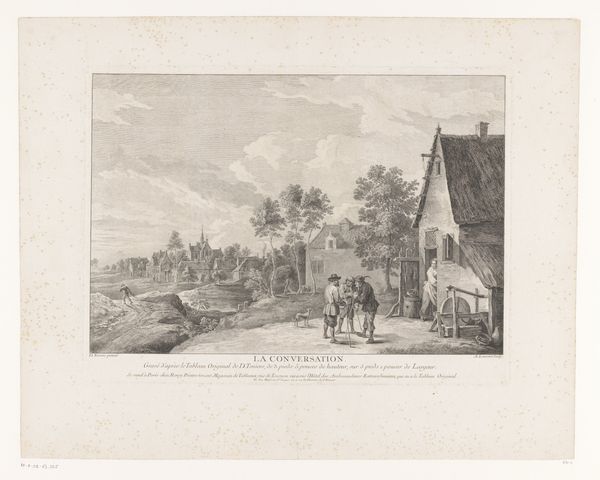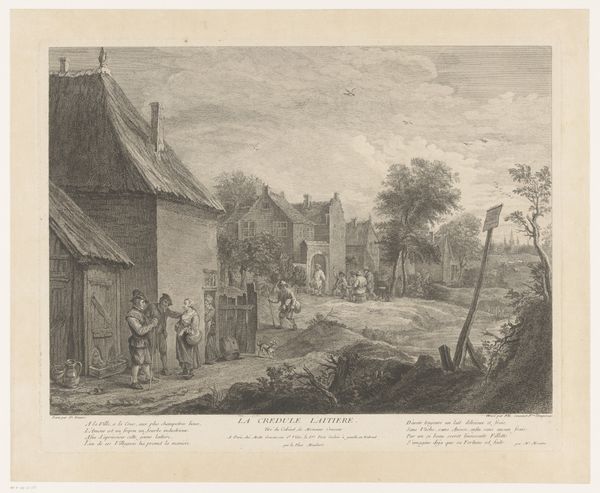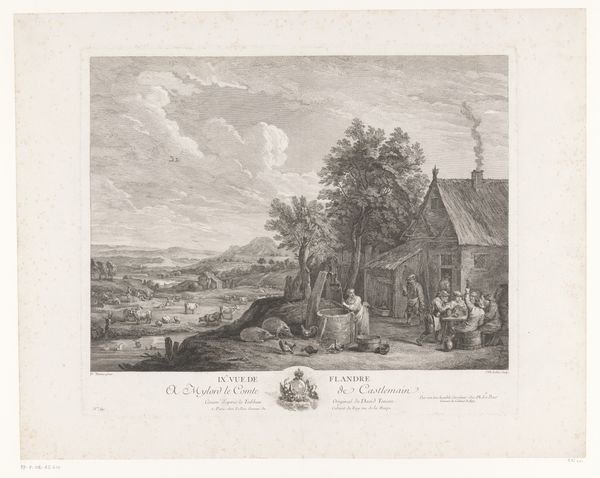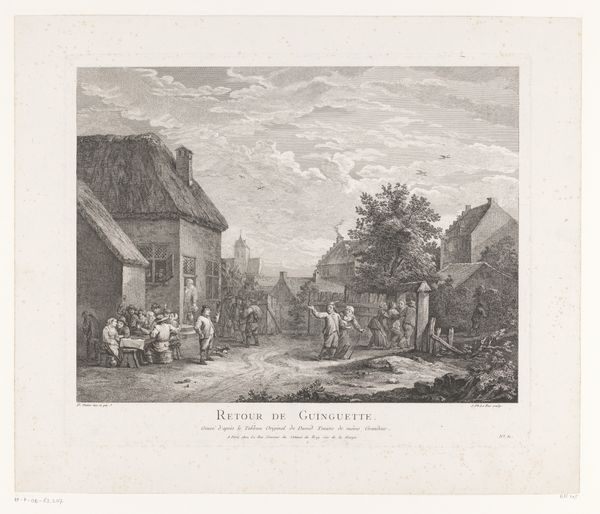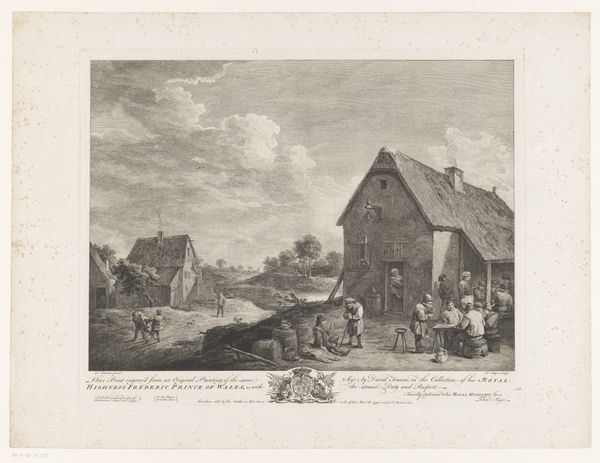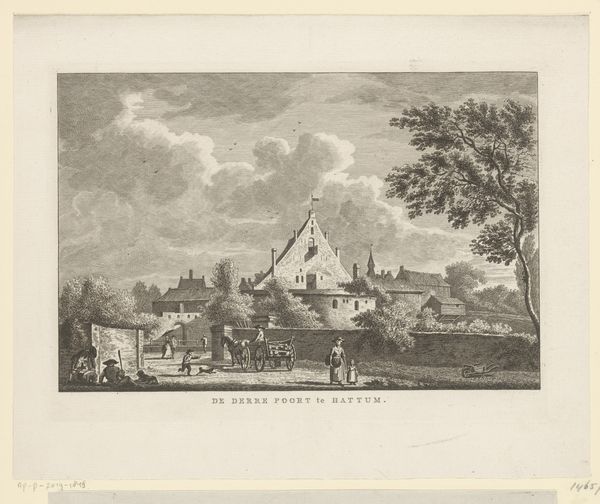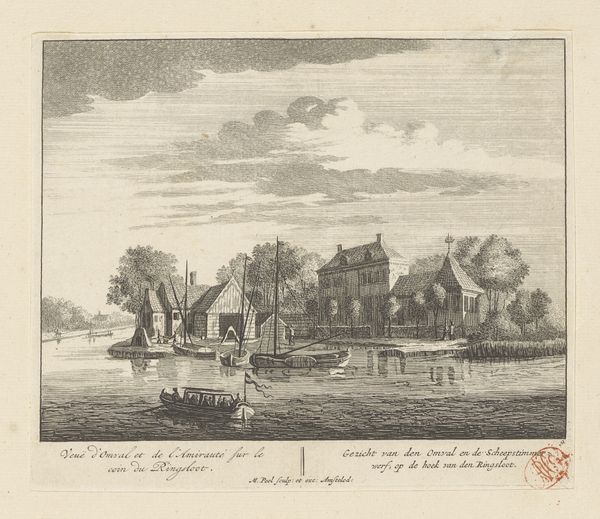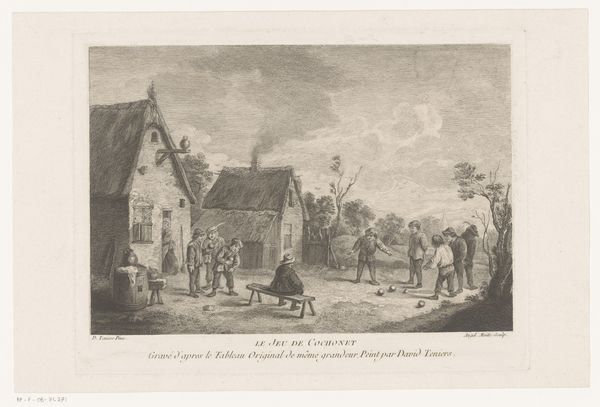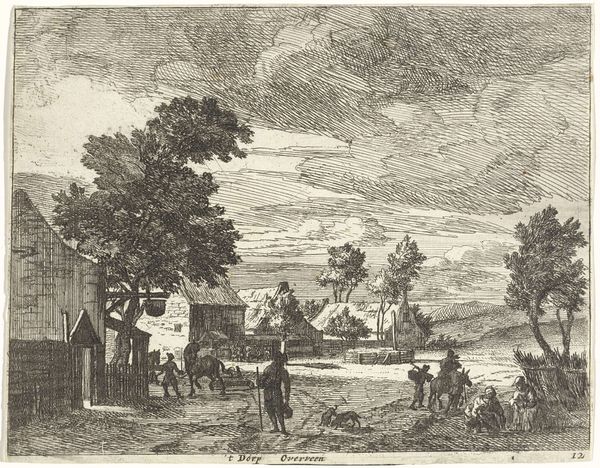
engraving
#
baroque
#
landscape
#
figuration
#
genre-painting
#
engraving
Dimensions: height 269 mm, width 356 mm
Copyright: Rijks Museum: Open Domain
Editor: So, here we have "Vlaams dorpsgezicht met mannen die een balspel spelen," or "Flemish Village Scene with Men Playing a Ball Game," an engraving by Louis Surugue, dating back to 1750. I find the detailed etching quite captivating, really pulling you into this moment of everyday life. What strikes you most about this piece? Curator: I see a careful representation of the material conditions of leisure and labor. The game, 'jeu de mail', is an aristocratic pursuit, but notice how the artist has situated it? It’s pressed right up against the domestic scene and a prominent building with smoking chimneys, emphasizing the proximity of labor. Editor: Interesting. It does seem to lack the overt grandeur one might expect from depictions of leisure in that era. Curator: Precisely! The very process of engraving allows for the mass production and distribution of this image, challenging notions of the unique art object. We see a flattening of social hierarchy. The 'high' art of landscape engraving is here being used to represent a decidedly more grounded subject matter. Do you consider how the materials themselves—paper and ink—affect how we see this kind of image versus, say, an oil painting depicting a similar scene? Editor: I suppose the accessibility is key. An engraving democratizes the image, making it available to a wider audience beyond the wealthy elite. It's also about the reproduction...it's not necessarily about 'preciousness'. Curator: Exactly. And consider the labour involved in both the depicted scene – the craft of the buildings, the act of the game, the very execution of the print! These all point towards a very specific moment of social production. Editor: So it's not just about the 'what' is depicted but 'how' and 'for whom' it’s being made and consumed that gives meaning? Curator: Absolutely. Examining art through its material production and social context can unlock a richer understanding of its significance. Editor: This has completely changed how I look at this unassuming village scene; thanks for that perspective!
Comments
No comments
Be the first to comment and join the conversation on the ultimate creative platform.

